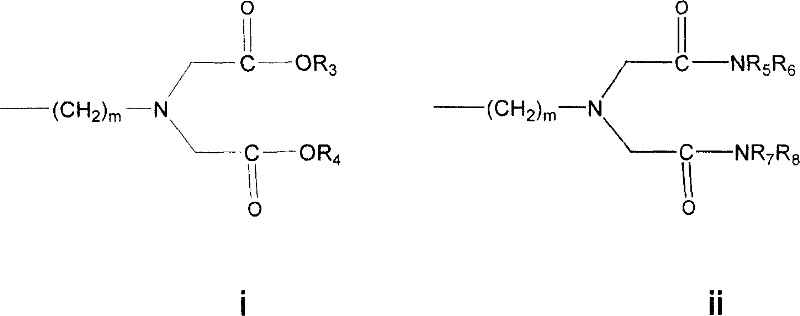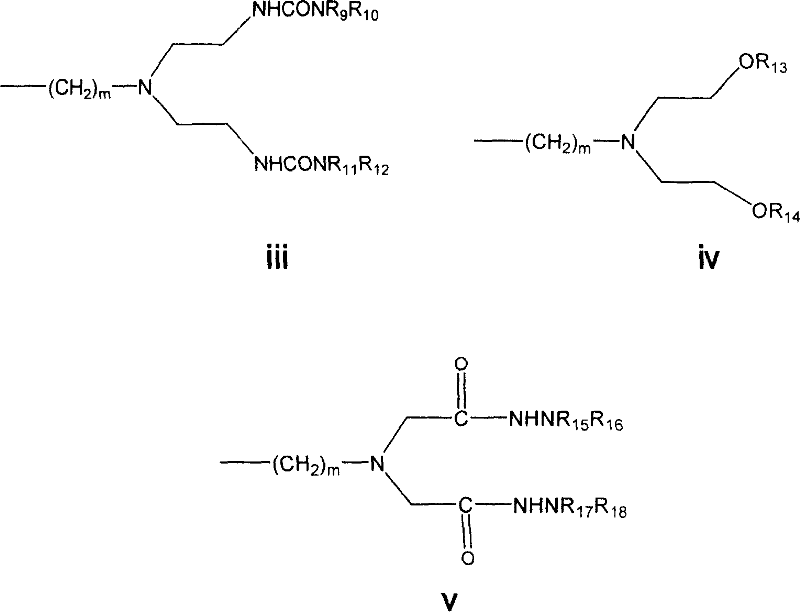LHRH antagonist with low-histamine releasing function
A technology of CH2 and peptide derivatives, applied in the field of decapeptide derivatives, can solve problems such as allergic reactions, and achieve the effect of low histamine release side effects
- Summary
- Abstract
- Description
- Claims
- Application Information
AI Technical Summary
Problems solved by technology
Method used
Image
Examples
Embodiment 1
[0319] Example 1: Boc-p-CH 2 Synthesis of Cl-Phe
[0320] Ac-Phe(p-CH 2 Cl)-Phe-OEt (prepared by our laboratory according to the conventional method, 5g, 17.6mmol) was refluxed in 40mL concentrated hydrochloric acid and 100mL dioxane for 10 hours, and then the hydrochloric acid and dioxane were evaporated to obtain a solid without separation and purification Add 50mL methanol directly under ice bath, adjust the pH of TEA to 9, then add 35.2mmol (3.9mL), then add 4.6g (Boc) 2 O (21.1 mmol), stir at room temperature for 12 hours, spin off methanol, adjust the pH of the aqueous solution to acidity, extract with ethyl acetate, wash the ester layer twice with water, and dry with anhydrous sodium sulfate. The ester layer was concentrated, and the oily substance was subjected to column chromatography and recrystallized from ethyl acetate-petroleum ether to obtain 2.7 g of white crystals. The total yield was 49.1%. TLC detection: chloroform: methanol: HOAc (20:1:0.5), Rf=0.6.
Embodiment 2
[0321] Example 2: Boc-Phe(NA B M) Synthesis
[0322] Boc-p-CH 2 Cl-Phe (prepared by our laboratory according to the conventional method) (1.75g, 5mmol) and dibenzyl iminodiacetate (1.88g, 6mmol, synthesized according to the method described in the following references: Huang Weide, Chen Changqing, peptide synthesis, science Press, 1985, p47) was placed in a 100ml round bottom flask, and 50ml ethanol was added to dissolve it. After adding TEA (1.69mL, 12mmol) under ice bath, stirring at room temperature for 72 hours, spin off the ethanol, adjust the pH of the aqueous solution to alkaline, wash with ether and then adjust the pH of the aqueous phase to acidic, extract with ethyl acetate, and wash twice with water. The layer was dried with anhydrous sodium sulfate. The ester layer was concentrated, and the solid was recrystallized with ethyl acetate-petroleum ether to obtain 1.80 g of white crystals with a yield of 61%. TLC detection: chloroform: methanol: HOAc (20:1:0.5), Rf=0.7.
Embodiment 3
[0323] Example 3: Boc-p-NH 2 (PhOCO)-Phe synthesis
[0324] Boc-p-NH 2 -Phe (1.40g, 5mmol, synthesized according to the method described in the following references: Theobald, P., Porter J., Rivier C., et al, J. Med. Chem., 1991, 34, 2395-2402) In a 150 mL round bottom flask, add 30 mL of water and 9.8 mL of 10% sodium carbonate aqueous solution to dissolve them, and then add 30 mL of 1,4-dioxane. Phenoxycarbonyl chloride (0.63 mL, 5 mmol) was added under ice bath. After 1 hour of reaction, 1,4-dioxane was spun off, and citric acid was acidified to acidity. It was extracted with ethyl acetate, and the ester layer was washed with water and saturated brine successively, and dried over anhydrous sodium sulfate. The ester layer was concentrated, 1.3 g of white crystals were obtained by column chromatography, and the yield was 65%. m.p. 260°C (decomposition), TLC detection: chloroform: methanol: acetic acid (9:1:0.5), Rf=0.8.
PUM
 Login to View More
Login to View More Abstract
Description
Claims
Application Information
 Login to View More
Login to View More - R&D
- Intellectual Property
- Life Sciences
- Materials
- Tech Scout
- Unparalleled Data Quality
- Higher Quality Content
- 60% Fewer Hallucinations
Browse by: Latest US Patents, China's latest patents, Technical Efficacy Thesaurus, Application Domain, Technology Topic, Popular Technical Reports.
© 2025 PatSnap. All rights reserved.Legal|Privacy policy|Modern Slavery Act Transparency Statement|Sitemap|About US| Contact US: help@patsnap.com



